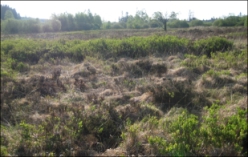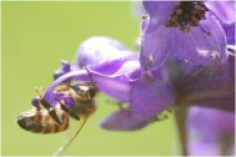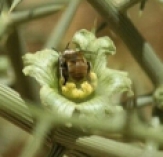
A journal for pollinators
To give every researcher a platform to publish relevant work, I founded the scientific Journal of Pollination Ecology (JPE).
The quality of articles is guaranteed by peer-review. Also, everybody should be able to have access to these findings - thus, JPE is open-access.
To address the larger public and forward the message, the associated Pollination Magazine provides short lay summaries of the science in several languages.
Without the dedicated support of international scientific pollination experts who believe in the same values as I do, this would never have been possible!
Habitat fragmentation and plant-pollinator-relationships
One tremendous threat to biodiversity and pollinators is habitat fragmentation, the partition of formerly continuous habitat into small, unconnected patches surrounded by a hostile matrix. We studied rare or declining plant species growing in such fragmented populations in fen landscapes. The reproductive success of these plants was not affected, BUT their preferential pollinators were less numerous. In small plant patches, they changed their foraging behaviour. Thus, pollinating insects suffer earlier from these kind of habitat disruptions and disappear before plants do.
This project was a cooperation of the Univeristé catholique de Louvain, the National Botanic Garden of Belgium and the University of Mons.
Nectar robbery and reproductive success
Nectar robbery is naturally seen as disadvantageous for a plant – an insects stealing nectar from flowers without pollinating them!
But there may be side effects: after having visited a nectar-less or robbed flower, “legal” pollinators (e.g. bumble bees) fly further away before probing the next flower. Thus, they also carry pollen to farther distances. Such a behaviour promotes cross-pollination, an important aspect for several plant species.
We could demonstrate this effect with an experimental study on Aconitum napellus ssp. lusitanicum (Ranunculaceae).
Grazing and plant-pollinator-interactions
Livestock grazing can tremendously change the landscape and impact on the diversity of plants as we see here in the Succulent Karoo of South Africa.
I investigated the consequences of grazing on the reproduction of several plant species (Aizoaceae, ice-plants). I also looked at the diversity of pollinators on study sites with different grazing regimes.
This research was part of BIOTA Southern Africa.
Pollination of the !Nara-melon
The !Nara melon (Acanthosicyos horrida, Cucurbitaceae) growing in the Namib desert offers the local Topnaar food and a little income. They dry the flesh and sell the seeds.
In 1999, when I studied this plant for my Diploma thesis, fruit production had declined and people wanted to know the causes. The Desert Research Foundation of Namibia initiated several studies on this plant. I found out that flowers were visited by mainly two bee species and a beetle, which would feed on the flowers.





